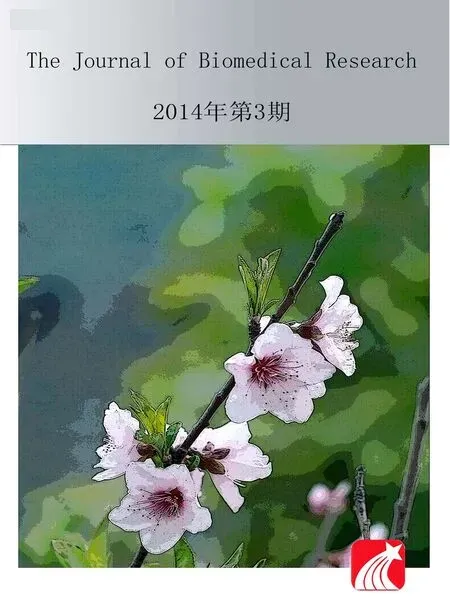Standardized training for resident doctors in China
Tonglin Sun,Ynqing Wng
aQingdao University Medical College,Qingdao,Shandong 266071,China;
bThe Affiliated Hospital of Qingdao University Medical College,Qingdao,Shandong 266003,China.
Standardized training for resident doctors in China
Tonglin Suna,Yanqing Wangb,?
aQingdao University Medical College,Qingdao,Shandong 266071,China;
bThe Affiliated Hospital of Qingdao University Medical College,Qingdao,Shandong 266003,China.
Medical graduates are not fully trained physicians when they leave medical school.Currently,standardized training for resident doctors in most hospitals in China is carried out according to the Ministry of Health guidelines.However,these guidelines provide only outline guidance,and specific resident training is managed independently by and varies with individual institutions.Therefore,it is important to study training demand to learn about the content and emphasis of training.
Goad established a gap analysis model of training demand,and the‘‘gap’’between‘‘realistic condition’’and‘‘ideal condition’’was set as the starting point of research[1].In this model,the‘‘ideal condition’’is determined according to the organizational characteristics and industrial development conditions.However,there will be gaps between the‘‘ideal condition’’and‘‘realistic condition’’,including gaps in knowledge,study,attitude and skills.The gaps,according to Goad,will generate training demand and any training activity should aim at eliminating or narrowing such gap. Using this model,we surveyed 137 resident doctors and 53 department directors at a tertiary care hospital in Qingdao,China.
We found that while resident doctors and department chairs share certain priorities in residency training such as‘‘professional dedication and sense of responsibility,’’‘‘team work’’and‘‘basic clinical skills’’,they differ on other priorities such as‘‘clinical thinking ability’’,‘‘communication skills with patients and their families’’, and‘‘scientific research ability’’(Table 1).Both residents and directors gave high scores(>4.5)on the ideal condition status values of 11 main training programs, indicating that the residents and directors attach great importance to them.Our survey shows that both resident doctors and department directors consider that they should reinforce training of basic clinical skills and safeguarding their own legal rights with medical law knowledge.However,they have different opinions on the importance and demand in respect of clinical thinking ability,scientific research ability and communication skills with patients and their families.Clinical thinking is a core clinical ability and determines the diagnosis and treatment level of a doctor[2].As resident doctors are still in the stage of professional training,they differ in perspective from their department directors who see cultivating the basic clinical skills of residents as the key to laying a good foundation for resident training. Scientific research capability also requires cultivation, but it is not on the priority list of department chairs. However,with the pressure of seeking jobs,professional advancement and evaluation for physician performance[3],resident doctors may feel an urgent need for scientific research achievements to give them advantages in their career.In addition,residents rank effective communicating with patients lower in priority while department directors consider it conducive to resolving conflict between doctors and patients.
Gap analysis effectively defines training demand and identifies priorities of residents and department chairs.It is important for residents and department directors to align their priorities so that resources arebetter utilized to meet the needs of resident doctors and provide effective training to resident doctors.As clinical skill is the most basic skill for a resident doctor,it should always be the top priority of training[4]. Currently,hospitals in China are averse to practices that might cause medical disputes[5]and are reluctant to allow residents to perform certain procedures,thus decreasing the opportunity of clinical training for young doctors.To gain clinical competency,resident doctors are recommended to actively participate in clinical practice under the supervision and guidance of clinical teachers,and hospitals should build operative skills training centers to facilitate training of resident doctors. Moreover,humanistic curriculums only account for no more than 8%of the total curriculum in medical education in China[6].Doctors with good humanistic quality are more skillful in communicating with patients and their family,which helps build better doctor-patient relationship.Hospitals may include contents of humanistic care in their resident training.

Table 1Demand analysis of resident training
[1] Li CP,Shi K.The structure and measurement of transformational leadership.Acta Psychol Sin 2005;37:803-11.
[2] TANG Y,ZHANG YZ,LI XS.On the cultivation of the pediatric clinical thinking ability of Chinese College Students.Chin J Info TCM 2009;16:126-7.
[3] XU ZJ,XU CP,LI Yan.Building of quantitive evaluation indexes on physicians employed with senior or intermediate title.China Med Herald 2013;10:162-4.
[4] Qi XY,Wang LK,Li H.The analysis of survey on the needs of residency training.Chin J Med Edu 2012;32:935-7.
[5] Shao SF,Guo JB.Discussion on‘‘coordination obligations’’replacing‘‘rebuttal burden of proof’’in medical lawsuit.Chin Hosp 2011;15:63-6.
[6] Yu Z,Xia KY,Wen JM,Huang XJ,Liao Y.Analysis of the current situation of clinical medical education and its strategy in China.China Higher Med Edu 2008;1:27-8.
Received 13 November 2013,Revised 26 December 2013,Accepted 23 February 2014,Epub 20 April 2014
ThisworkwassupportedbytheQingdaoCityPublicScienceandTechnology Support Program of Soft Science Research Project(11-2-3-75-(50)-zhc).
?Corresponding author:Yangqing Wang,the Affiliated Hospital of Qingdao University Medical College,16 Jiangsu Road,Qingdao,Shandong 266003,China.Tel/Fax:+86-015154223580/+86-0532-82911656,E-mail:suntonglin200688@126.com.
The authors reported no conflict of interests.
?2014 by the Journal of Biomedical Research.All rights reserved.
10.7555/JBR.28.20130181
 THE JOURNAL OF BIOMEDICAL RESEARCH2014年3期
THE JOURNAL OF BIOMEDICAL RESEARCH2014年3期
- THE JOURNAL OF BIOMEDICAL RESEARCH的其它文章
- Analytical characteristics of a qPCR-based molecular diagnostic assay-conceptual considerations for laboratory personnel
- Drainage vs.non-drainage after cholecystectomy for acute cholecystitis:a retrospective study
- Position and complications of pedicle screw insertion with or without image-navigation techniques in the thoracolumbar spine: a meta-analysis of comparative studies
- Correlation of obstructive sleep apnea hypopnea syndrome with metabolic syndrome in snorers
- Class A scavenger receptor activation inhibits endoplasmic reticulum stress-induced autophagy in macrophage
- Expression of human hepatic lipase negatively impacts apolipoprotein A-I production in primary hepatocytes from Lipc-null mice
